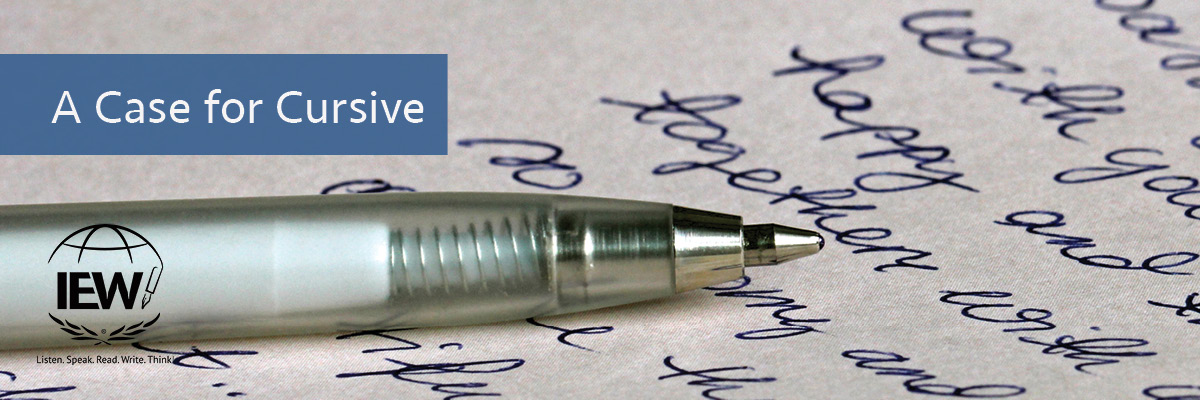
In today’s western world, children typically first learn to print before they learn cursive—if they even learn cursive at all. However, is teaching a child to print before teaching cursive really the best approach? What are the advantages to learning cursive when a child is young?
Actually, many studies show that teaching cursive to a student yields plenty of benefits. To begin with, there is a natural flow to cursive that is relaxing to the hand. Young children who learn to write cursive first find it less taxing physically. Learning cursive can also greatly relieve the discomfort caused by dysgraphia.
Because all lowercase cursive letters begin in the same spot (on the baseline, moving from left to right) and flow directly into the next letter, they also limit the likelihood of letter reversals. Letter reversals are a common issue for young students who are learning to print, but they can persist even into later years if a student has dyslexia or dysgraphia. By learning cursive at an early age, students can avoid this pesky problem virtually right from the start.
Not only does learning cursive mitigate letter reversals, it also helps a child learn proper letter and word spacing. A child who is learning to print is at first widely variable in his spacing. Letters intended to be one word can sprawl across the page and haphazardly connect directly into the next word. Conversely, letters can crowd together on the line with no discernable break at all between the words. Cursive eliminates that issue because each letter in a word is connected. This connection automatically encourages a student to keep the word together as a unit. By keeping it as a unit, cursive also encourages correct spelling.
In order to spell a word accurately, a student must be able to isolate the sounds (phonemes) in the word, recall the letters that represent those sounds, and then place them in the right sequence. Again, cursive helps a student with this sequencing because all of the letters in the word appear together as a conjoined unit rather than individual letters. As a child writes, the word flows off the pen as a unit rather than as isolated symbols. The unified kinesthetic action helps cement the word into the child’s memory for future recall for both spelling and reading.
Cursive does all of the above, and it does it quickly. Because the words are written as units, more writing can be completed in cursive versus print in the same period of time. This makes it easier to capture ideas, take notes, and recall information. This can yield a direct positive correlation to grades in later years when it is imperative a student be able to take adequate notes during a lecture.
Yes, learning cursive offers a host of benefits, not the least of which is the ability to read Grandma’s letters. If you are intrigued by the benefits of learning cursive, whether it be for your children or for yourself, take a look at the book Cursive Knowledge. After all, it is never too late to learn the art of cursive. Don’t hesitate! A host of benefits awaits!
|
Jennifer Mauser has always loved reading and writing and received a B.A. in English from the University of Kansas in 1991. Once she and her husband had children, they decided to homeschool, and she put all her training to use in the home. In addition to homeschooling her children, Jennifer teaches IEW classes out of her home, coaches budding writers via email, and tutors students who struggle with dyslexia. |

